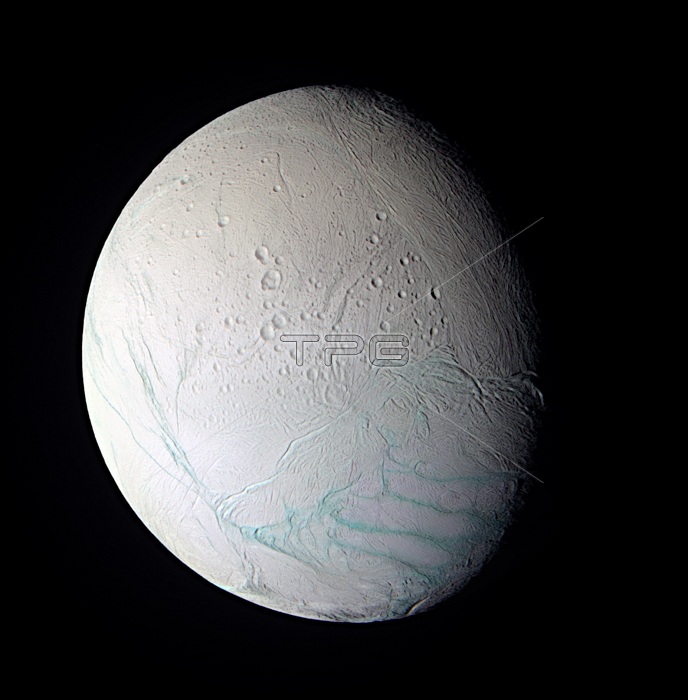
As Cassini approached the intriguing ice world of Enceladus for its extremely close flyby on July 14, 2005, the spacecraft obtained images in several wavelengths that were used to create this false-color composite view. The surface of Saturn's moon Enceladus shows a range of crater ages, including regions that have very few discernable craters at Cassini's resolution. This false-color view is a composite of individual frames obtained using filters sensitive to ultraviolet (centered at 338 nanometers), green (centered at 568 nanometers) and infrared light (centered at 752 nanometers). The view has been enhanced to accentuate subtle color differences and fine-scale surface features. The Sun illuminates Enceladus from the lower left, leaving part of the moon in shadow. This view shows the anti-Saturn hemisphere, centered at 42 degrees south latitude, 167 west longitude.
| px | px | dpi | = | cm | x | cm | = | MB |
Details
Creative#:
TOP22315140
Source:
達志影像
Authorization Type:
RM
Release Information:
須由TPG 完整授權
Model Release:
N/A
Property Release:
No
Right to Privacy:
No
Same folder images:

 Loading
Loading